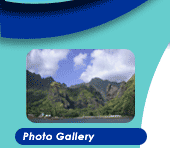











Beaufort Scale Admiral Francis Beaufort was a 19th century British tar in the days of the old wooden tall ships. The scale he developed has been ridiculed by mariners for being patternless because there is no apparent uniform progression in the scale. Force 2, for example, describes winds from 4 to 6 knots, Force 3 from 7 to 10, and Force 4 from 11-16. Then Force 5 covers only from 17-21. The wind differences vary from 2 knots to 3, then 5, and back to 4. Part of our Pacific Bliss library contains a book called Mariner's Weather by William P. Crawford. He claims that the lack of symmetry was not part of Beaufort's plan, and defends his damaged reputation by saying that the Admiral was not referring to wind speed at all! He says that what the esteemed Admiral had in mind was the number of sails that should be furled as the wind strengthened. In light airs, just one would be taken in, whereas in a gentle breeze might require three. In a near gale, seven would come down, and in a violent storm, eleven. There is now a tendency to express wind value in knots instead of Beaufort scale. The Pacific Bliss multi units allow the user to choose whichever he or she wishes as a display. We use the Force scales in the cockpit display. A read-out in knots suggests a misleading exactness whereas a Force reading allows for the slack. It makes it easier to give instructions to the crew; for example, during the Atlantic crossing, instructions were to take down the spinnaker at Force 7. The following chart will help you understand the forces and sea conditions we encountered during our night of sheer terror: |
|||||||||||||||||||||||||||||||||||||||||||||||||||||||||||||||||||||||||||
|
|||||||||||||||||||||||||||||||||||||||||||||||||||||||||||||||||||||||||||
|
|
 |
 |
 |
|
|||||||||
|
|
|
||||||||||||
|
|
|
||||||||||||
|
|
|
||||||||||||
|
|
|
|
|
|
|
|
|
|
|||||
|
|
|
||||||||||||
|
|
|
||||||||||||
 |
 |
|
|||||||||||
|
|
|
||||||||||||
|
|
|
||||||||||||
|
|
|
||||||||||||
 |
|
||||||||||||
|
|
|
||||||||||||
|
|
 |
|
|||||||||||
 |
|
||||||||||||
 |
|
||||||||||||
 |
|
||||||||||||
 |
|
||||||||||||
 |
|
||||||||||||
|
|
|
|
|
|
|
|
|
|
|
|
|
|
|